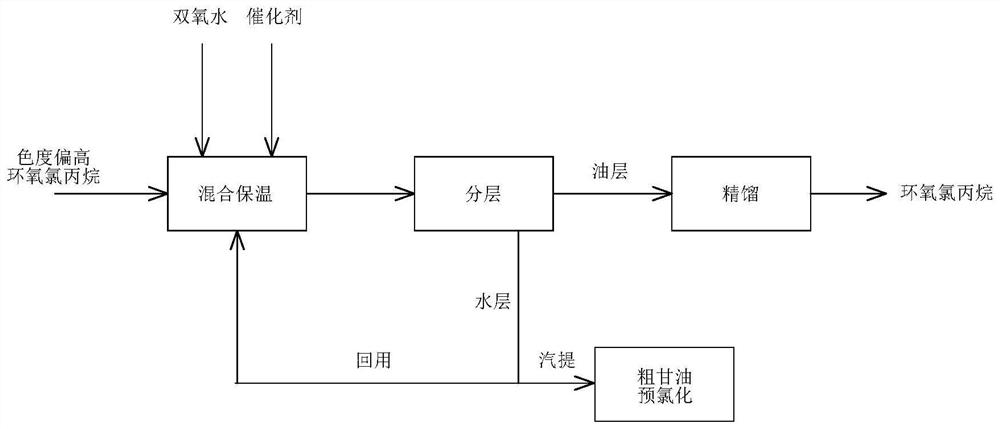Method for decolorizing epoxy chloropropane with hydrogen peroxide
A technology of epichlorohydrin and hydrogen peroxide, which is applied in the direction of organic chemistry, can solve the problems of color impurities and high chroma of epichlorohydrin, and achieve the effects of guaranteed total yield, high safety, and improvement of high chroma
- Summary
- Abstract
- Description
- Claims
- Application Information
AI Technical Summary
Problems solved by technology
Method used
Image
Examples
Embodiment 1
[0029] Epoxyne chloropropanes of the chromaticity 40 were added to 2% bioxyhydrate 100g, 0.4 g of sodium hydroxide, stirring and warmed up to 35 ° C, holding 2 h, retained after retail oil, oil layer dehydration, product chrominance value 5, ring The yield of oxychlorochlorophyne is 98.9%.
Embodiment 2
[0031] The chloropropane of the chromaticity 40, adding 2% dual oxygen water 100g, stirring and warping to 35 ° C, holding 2 h, retained afterward, oil layer dehydration, product chloropropane yield 99.0 %.
Embodiment 3
[0033] Epoxyoxropane of the chromaticity 40, add 5% hydrogen peroxide 100g, sodium hydroxide 10g, stirring to warm up to 35 ° C, heat insulation 0.2h, retained oil, oil layer dehydration, product chrominance value 5, ring The oxychloroprice yield was 95.4%.
PUM
 Login to View More
Login to View More Abstract
Description
Claims
Application Information
 Login to View More
Login to View More - R&D Engineer
- R&D Manager
- IP Professional
- Industry Leading Data Capabilities
- Powerful AI technology
- Patent DNA Extraction
Browse by: Latest US Patents, China's latest patents, Technical Efficacy Thesaurus, Application Domain, Technology Topic, Popular Technical Reports.
© 2024 PatSnap. All rights reserved.Legal|Privacy policy|Modern Slavery Act Transparency Statement|Sitemap|About US| Contact US: help@patsnap.com








